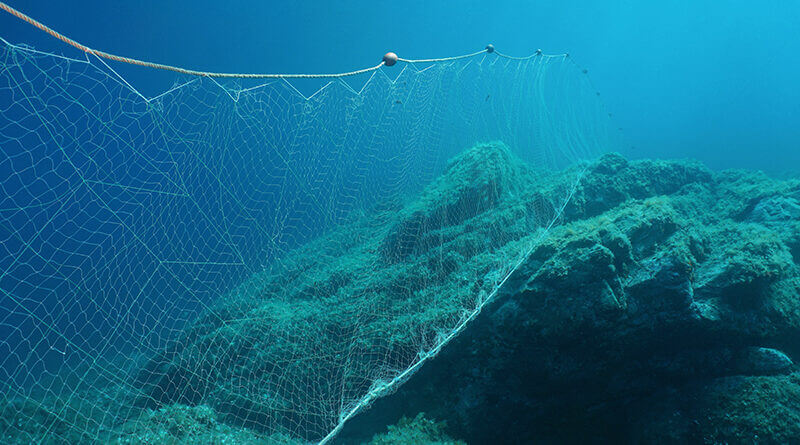Ocean Biodiversity at Risk from Set Gillnet Fishery
MONTEREY— On April 17, Oceana and Turtle Island Restoration Network (TIRN) published a report that discovered the set gillnet fishery targeting California halibut and white seabass off the coast of Southern California is a threat to the health and diversity of the ocean’s ecosystem. In addition, it has been discovered that the fishery throws 64 percent of the animals caught overboard, which is among the highest bycatch rates of any fishery in the country, according to Oceana.
The camouflaged nets can be as long as the Golden Gate Bridge. They randomly catch more than 125 species, including marine birds, sharks, rays, skates, and other fish that migrate, feed, reproduce, and contribute to the ecosystems off the coast of Southern California. Unfortunately, over half of the animals thrown overboard are already or almost dead, raising significant concerns over the fishery’s impact on California’s marine biodiversity.
“The set gillnet fishery targeting California halibut and white seabass is clearly a risk to the health and resilience of California’s oceans,” said Caitlynn Birch, Pacific marine scientist with Oceana, in a press release from April 17. “These nets injure and kill a myriad of ocean animals, including rare and vulnerable species. Despite a history of wildlife impacts and action by California voters, the fishery remains largely unmonitored as these nets continue to hurt wildlife off Southern California.”
Oceana and TIRN conducted an analysis, and the results are as follows:
· 75 percent of sharks, skates, and rays that are caught are tossed overboard. These species are essential in marine ecosystems and vulnerable to overfishing.
· Set gillnets are the primary threat to juvenile great white sharks in their nursery grounds off California. White sharks play an important ecosystem role, and their population is still low.
· Gray whales and federally threatened and endangered populations of humpback whales are susceptible to entanglement in set gillnets.
· More California sea lions are killed annually by set gillnets than all other observed West Coast fisheries combined.
· Set gillnets throw back as waste dead commercial and recreational fish species — such as damaged and undersized California halibut, rock crab, sand bass, and lingcod — which can harm struggling populations and impact other recreational and commercial fisheries.
Management tools have been created to reduce bycatch in California, yet hook and line fishing methods remain the most selective and well-established method in the fishing industry. As a result, the California Department of Fish and Wildlife (CDFW) prioritized the set gillnet fishery as the first state-managed fishery that requires action to address its risk to the ecosystem. Oceana, TIRN, other conservation groups, marine mammal rescue centers, recreational fishing organizations, and businesses are calling on the California Fish and Game Commission — the managing authority — to reduce the “needless waste” set gillnets inflict on California’s ocean life in accordance with state law.
A set gillnet is attached to two poles fixed in the substrate or an anchor system to prevent net movement. California set gillnets were banned in Northern California in 1915, but after Southern Californian sport fishermen saw a significant decline in fish populations in the 1980’s fishermen, environmental organizations, and elected officials worked to address the wildlife impacts that set gillnets were causing. As a result, Prop 132 was passed by voters in 1990, prohibiting the use of gillnets within state waters 0-3 miles off the coast of Southern California. Still, in the late 1990s, scientists found that gillnets were killing an alarming number of marine mammals and seabirds. The California Fish and Game Commission then decided to ban the use of these nets off the Central California Coast in 2002. Unfortunately, due to the complexities of these various actions, most Californians are unaware that while set gillnets are banned in state waters off the Southern California mainland (0-3 nautical miles), they are still being used in federal waters, offshore banks, and in certain areas around Southern California’s Channel Islands, causing immense damage to wildlife.
For more information, visit https://usa.oceana.org/.


